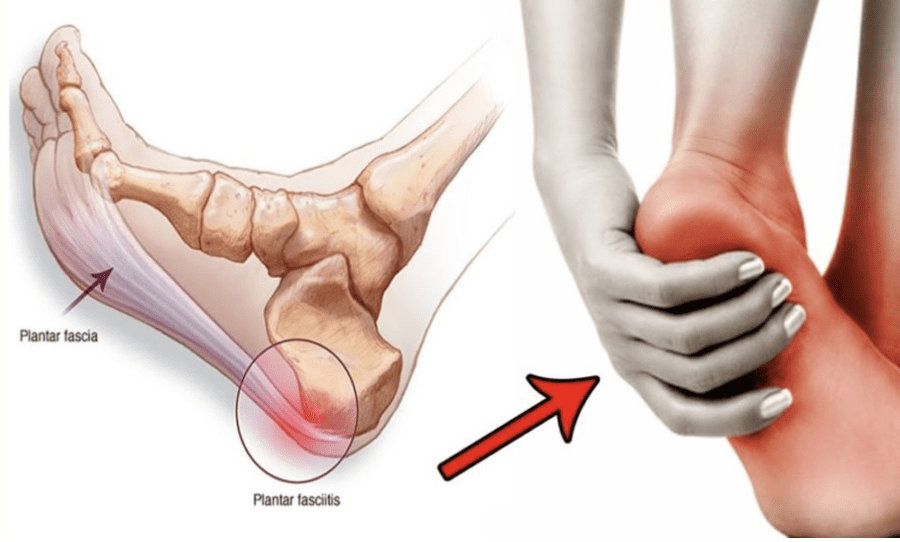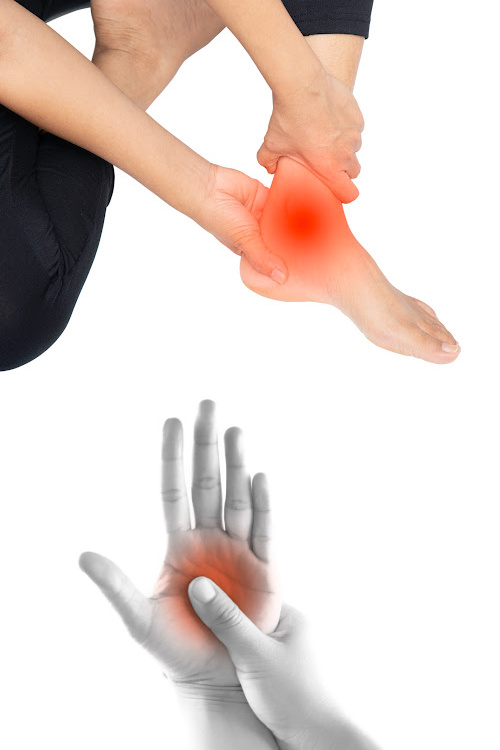Foot pain, in general, can make it challenging to go about daily activities. Every time you take a step, your feet bear the weight of your entire body. So, when you experience sharp heel pain or pain in the arch of your foot, it can be debilitating, thereby reducing your quality of life. This type of pain can make it difficult to stand, walk, or even wear shoes comfortably. There are a lot of potential causes for sharp foot pain. Fortunately, there are also many treatment options available. At NextPain Care, we target the root cause of your heel pain.
Understanding The Foot’s Anatomy
The foot is a complex structure comprising many different bones, joints, muscles, tendons, and ligaments. The calcaneus (the heel bone) is the foot’s biggest bone and plays a vital role in supporting your body weight while walking or standing. The arch of the foot works as a shock absorber and helps distribute your body weight evenly.
Because the foot is connected to the rest of the body through a network of muscles and tendons, any pain or discomfort in the heel can affect your overall movement and posture, leading to other issues such as knee, hip, or back pain.
Experiencing Sharp Pain In The Heel Or Arch
Sharp pain under the heel or in the foot arch can be described as a sudden, intense, stabbing sensation. It may feel like someone is poking a knife into your foot or placing a sharp object directly on the bottom of your heel. Heel pain ranges from mild to severe and can occur with every step you take.
Apart from sharp pain, you may also experience tenderness or swelling in the heel or arch area. In some cases, the pain may radiate to other parts of the foot, causing discomfort and difficulty walking or standing.
Possible Conditions Associated With Heel Pain
Several conditions can cause sharp pain under the heel or in the foot arch. Many of these are inflammatory conditions that affect the tissues in the foot, leading to pain and discomfort. Some of the common conditions include:
Plantar Fasciitis
Plantar fasciitis is a common cause of heel pain. It occurs when the band of tissue that stretches from the heel to the toes becomes inflamed. It usually occurs due to repetitive strain or overuse, causing micro-tears in the fascia and leading to sharp pain in the heel.
Rheumatoid Arthritis
A chronic autoimmune disorder, rheumatoid arthritis can also cause heel pain. It occurs when the immune system attacks the joint’s tissues, causing inflammation and damage. In some cases, this can affect the joints in the foot, leading to sharp pain under the heel or in the arch. Rheumatoid arthritis is thought to be caused by a combination of genetic and environmental factors.
Gout
Gout is a type of arthritis caused by uric acid crystal buildup in the joints. It commonly affects the big toe but can also lead to pain and swelling in other joints, including the heel. The pain is often described as sharp and excruciating. Gout can occur due to various factors, including genetics, diet, and lifestyle. It is more common in men and people with a family history of the condition.
Peripheral Neuropathy
Peripheral neuropathy refers to nerve damage that affects the peripheral nerves. These nerves carry signals from the spinal cord and brain to the rest of the body. As a result, it can cause sharp pain in the feet and hands. There are several underlying conditions that can lead to peripheral neuropathy, including diabetes or vitamin deficiencies.
Bursitis
Bursitis refers to inflammation of the bursae, which are small fluid-filled sacs that function as cushions between bones and soft tissues. It can occur in any joint, including the heel, and can cause sharp pain and tenderness. Bursitis may be caused by overuse or injury to the affected area.
Reactive Arthritis
Reactive arthritis is a form of inflammatory arthritis. It can develop as a reaction to an infection in another part of the body, such as the urinary tract or gastrointestinal tract. Reactive arthritis can cause joint pain and swelling, including the heels.
Ankylosing Spondylitis
A type of arthritis that usually affects the spine, ankylosing spondylitis can also cause heel pain. It occurs when the body’s immune system attacks the joints in the spine, leading to inflammation and pain. In some cases, it may also affect other joints in the body, including the heels. This can happen if the condition causes Achilles tendon inflammation.
Strains And Sprains
Muscle, tendon, and ligament damage in the foot can also cause sharp pain under the heel or in the arch. These injuries are commonly associated with physical activities that involve jumping, running, or sudden changes in direction.
Tarsal Tunnel Syndrome
Tarsal tunnel syndrome occurs when the posterior tibial nerve (which runs along the inside of the ankle and into the foot) becomes compressed or damaged. This can cause sharp pain, numbness, and tingling in the heel and other parts of the foot.
Lumbar Radiculopathy
Issues with the lower back, such as a herniated disc or spinal stenosis, can cause nerve compression and lead to sharp pain in the feet. This is known as lumbar radiculopathy and can also cause other symptoms like weakness or numbness.
Heel Spurs
Heel spurs are bony growths that can appear on the heel bone due to excessive strain or pressure. They may not always cause pain, but in some cases, they can lead to sharp pain under the heel.
Diagnosing Pain Under The Heel Or Arch Of The Foot
If you are experiencing sharp pain under the heel or in the arch of your foot, it is crucial to consult your physician for a proper diagnosis and treatment plan. Your physician will begin by reviewing your medical history and asking about your daily activities, lifestyle, and any recent injuries or incidents that could be contributing to the pain. This initial discussion helps in understanding the context of your symptoms.
Following the medical history review, a thorough physical examination of your heel and foot will be conducted. This exam will help identify any obvious signs of injury, inflammation, or abnormalities. In some cases, to gain a more detailed understanding of the structures within your foot, your physician may recommend imaging tests such as X-rays or MRIs. These diagnostic tools can help pinpoint issues like fractures, plantar fasciitis, or other underlying conditions that might not be immediately apparent through a physical exam alone.
Blood tests may be ordered to detect signs of inflammation or other medical conditions that could be contributing to your foot pain. These tests can provide valuable insights into your overall health and help rule out systemic issues that might manifest as localized pain in your foot. By following these steps, your physician can develop a comprehensive treatment plan tailored to your specific needs, ensuring the most effective techniques to alleviate your discomfort and promote healing.
Conventional Treatment Options
Although the treatment depends on the severity of the pain and the underlying cause, several conventional treatments are available for heel pain. Some of these treatments include:
- Stretching: Performing specific stretches can help improve flexibility and reduce tension in the muscles, tendons, and ligaments in the foot.
- Physical therapy: A physical therapist may recommend exercises to strengthen the muscles and improve stability in the foot. Such exercises can help reduce pain by providing better support to the affected area, which can also help prevent future injuries.
- Ice and heat application: Applying ice or heat to the heel can help provide temporary relief from pain or inflammation. Generally, ice is recommended for acute injuries, while heat may be more beneficial for chronic conditions.
- Orthotic inserts: Custom-made orthotic inserts can provide support and cushioning to the foot, alleviating pressure and reducing pain. They are especially helpful for people with flat feet or high arches.
- Medications: Non-steroidal anti-inflammatory drugs (NSAIDs) can help reduce heel pain and inflammation. In some cases, corticosteroid injections may also provide more immediate relief.
- Surgery: Surgery may be suggested in cases where other treatments have not been successful. This is typically reserved for severe cases.
- Rest: Avoiding activities that aggravate the pain can give the foot time to heal, especially if the pain is caused by an injury and not an underlying condition.
NextPain Care Approach For Heel Pain-Related Conditions
At NextPain Care, a physician-directed company, we combine physical therapy and behavioral therapy into our innovative three-level system. Our approach is rooted in evidence-based outcomes and data, ensuring that our treatments are both effective and scientifically supported.
Our comprehensive three-level approach starts with conservative treatments such as physical therapy, lifestyle changes, and medication management to manage pain with minimal invasiveness. When these methods fall short, we turn to advanced options like epidural steroid injections, nerve blocks, and spinal cord stimulation to provide more comprehensive pain relief.
We understand that living with pain is challenging, and we’re here to help. Our three-level system allows us to deliver comprehensive care that meets the multifaceted needs of our patients.
Heel-Pain Causing Conditions We Manage At NextPain Care
Because our treatment focuses on the root cause that contributes to chronic pain, we can manage heel pain associated with a variety of underlying conditions, including the following:

Plantar Fasciitis Pain Treatment
NextPain Care provides pain management for plantar fasciitis, focusing on improving mobility and offering lasting relief from chronic heel pain through personalized...

Rheumatoid Arthritis Pain Treatment
Rheumatoid arthritis can be a debilitating and painful condition that causes swelling, joint damage, and immobility. NextPain Care offers a comprehensive approach to treating the pain associated with rheumatoid arthritis and the condition itself. We aim to...

Peripheral Neuropathy Treatment
Peripheral neuropathy is a condition that can cause severe pain, impacting daily life. At NextPain Care, we use evidence-based practices to provide relief from the painful symptoms of peripheral neuropathy, adhering to the highest standards set by medical...
The Importance Of Early Diagnosis
Early diagnosis of the underlying cause of heel pain is crucial as it can help prevent further damage and complications. For example, if the pain is caused by plantar fasciitis, early treatment can help prevent the condition from becoming chronic and causing long-term discomfort. Similarly, identifying and managing conditions like rheumatoid arthritis or peripheral neuropathy in their early stages can help slow down their progression and prevent more severe symptoms from developing. If heel pain is not addressed, it could lead to other structural and functional problems in the foot.
Moreover, early diagnosis can also lead to a more effective treatment plan. By determining the root cause of your pain, healthcare professionals can tailor a treatment plan that targets the specific condition, leading to better outcomes and faster recovery.
Receive Proper Treatment For Your Heel Pain
Heel pain can be caused by many types of conditions and can greatly impact daily activities and quality of life. Proper diagnosis and treatment are essential in managing and potentially resolving the pain. Conventional treatments such as stretching, physical therapy, and medications may provide relief, but for chronic pain that stems from underlying neurological factors, a combination of these treatments and lifestyle changes can be a good recommendation. Our holistic approach to pain management can help improve your overall well-being and provide long-term relief by helping manage your heel pain.
Trouble walking due to heel pain? Let NextPain Care address the root cause.
